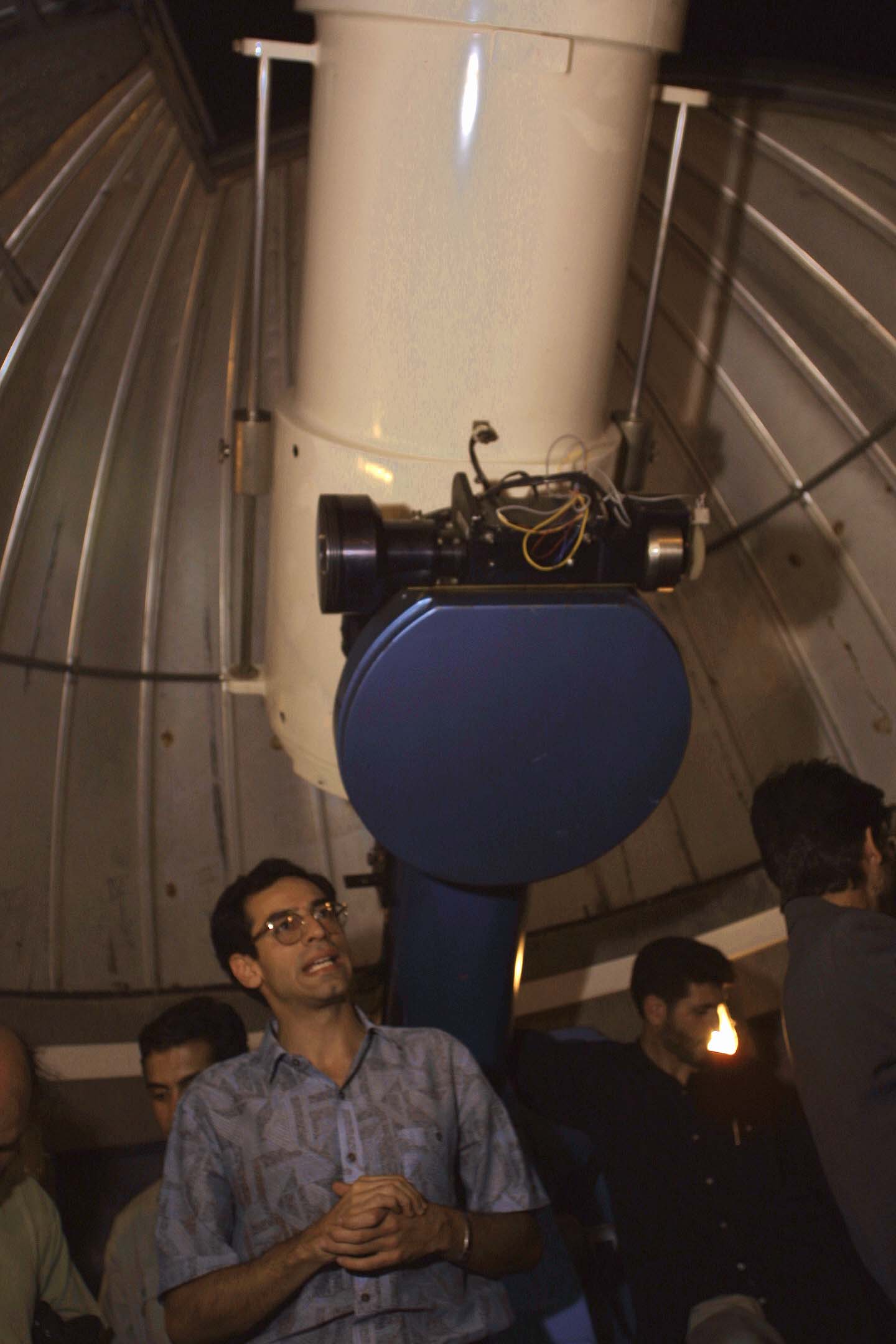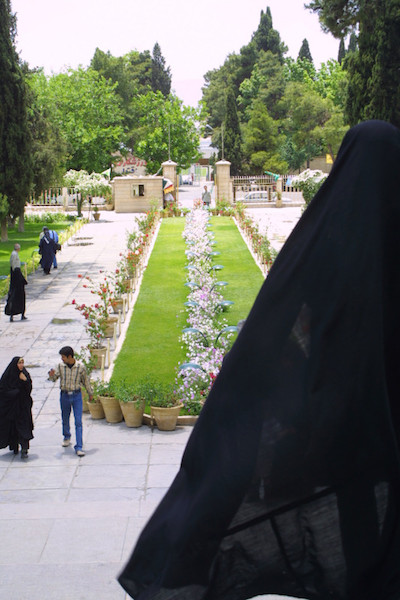- Published: Friday, March 31 2017 22:11

Shiraz is a beautiful city in southern Iran known for its gardens, the tombs of famous poets and the nearby monuments of the early Persian empire. Indeed, the road sign that welcomes visitors to the city proclaims Shiraz as the country’s center of culture. I don’t know if that claim holds today but it seems likely to have been so centuries ago. If fact the Pars people of Fars Province in which Shiraz is located are the source for the terms “Persia” (the name of the country for over 2400 years) and “Farsi” (the common name of Persian, the most often spoken language). Reza Shah, who took control of the government in a revolt in the early 20th century, changed the name of the country in recognition of the differing peoples and cultures that have swept through the area and populated Iran for millennia. “Iran” recognizes the country’s location on the Iranian Plateau, a region named for the Aryan people who are the first known to have settled here.
 We visited the tomb of Hafez, a 13th century poet, in a beautiful open structure surrounded by gardens bustling with activity as families touch and pray over the tomb and then dine in a traditional tea house nearby. Hafez is the most revered of Persian poets, a mystic regarded in an almost religious manner today. His poetry is still frequently recited and the book of his life’s work is the most common volume in Iranian households next to the holy book of Islam, the Koran. A common practice for those making decisions is to open the book of Hafez at random to find the answer in whatever page unfolds. The tomb and its surroundings celebrate beauty and life as families play over the graves of other great Persians buried near the great poet. At the tomb of Sa’adi, another great poet of the 13th century, the mausoleum surrounded by gardens has a more somber feel, due in part to the small interior space cut off from the activity outside. The differences reflect the qualities of the poets; Sa’adi’s writing added much to the culture and language of Persia but without the mystic quality of Hafez’ work. Poetry on the tomb and surrounding panels are recited with a characteristic Persian tone, almost monotone as though the words should speak for themselves without anything added by the reader. I find the style hypnotic and will listen to recitations without understanding the words or the meaning of the poem.
We visited the tomb of Hafez, a 13th century poet, in a beautiful open structure surrounded by gardens bustling with activity as families touch and pray over the tomb and then dine in a traditional tea house nearby. Hafez is the most revered of Persian poets, a mystic regarded in an almost religious manner today. His poetry is still frequently recited and the book of his life’s work is the most common volume in Iranian households next to the holy book of Islam, the Koran. A common practice for those making decisions is to open the book of Hafez at random to find the answer in whatever page unfolds. The tomb and its surroundings celebrate beauty and life as families play over the graves of other great Persians buried near the great poet. At the tomb of Sa’adi, another great poet of the 13th century, the mausoleum surrounded by gardens has a more somber feel, due in part to the small interior space cut off from the activity outside. The differences reflect the qualities of the poets; Sa’adi’s writing added much to the culture and language of Persia but without the mystic quality of Hafez’ work. Poetry on the tomb and surrounding panels are recited with a characteristic Persian tone, almost monotone as though the words should speak for themselves without anything added by the reader. I find the style hypnotic and will listen to recitations without understanding the words or the meaning of the poem.

On a hill above Shiraz’s center stands Biruni Observatory of the University of Shiraz. Built in 1975, the 20-inch Cassegrain telescope was made by Astro Mechanics of Austin, Texas and is the largest in use in Iran today. The students of the Astronomy Department have long been engaged in an ambitious and careful program of stellar photometry, specializing in eclipsing binary stars. The observatory was one of the first in the Middle East, built during the time of the Shah with the help of an American professor who was teaching at Shiraz University. After the Revolution all universities in Iran were closed for two years and the professor moved back to the US but the observatory remains an important center for both student research and amateur activities in southern Iran. There are many smaller observatories built by schools and serious amateur groups in Iran and even plans for a national observatory for professional research. Plans move slowly in a difficult economy but the government is very interested in increasing funding for science facilities that would not only educate Iran’s youth but might attract foreign scientists in larger numbers.
Outside Shiraz one finds the greatest monuments to the emergence of the Persian empire. Pasardargard was founded by the first Persian king, Cyrus The Great, as his capitol in the 6th century BC. His tomb is very simple in keeping with his desire to remain one with his people rather than be too highly exalted. Nearby, Persepolis -- a name given by the invading Greeks meaning “City of the Persians” – was a much larger capitol by Darius The Great beginning in the 5th century BC and expanded by his descendants. It was burned by Alexander the Great 150 years later but the gigantic stone columns and much of the huge statuary remain, hinting at what must have been an incredible site for royal subjects and emissaries of foreign lands. The city sits on a high platform, the Gate of all Nations greeting approaching visitors at the top of the Grand Staircase. Many palaces built by succeeding kings are found in various forms of completeness. There is no other place that one gets such a feel for the grandeur of Persia at the time of the Achemenians, the founding dynasty of the empire that waxed and waned through the centuries.
The Persians would later have their revenge on the Macedonians as the Persian empire spread to become the largest at the time, but the empire’s fortunes would inevitably turn. A more recent invasion of Persia also made its terrible mark on Persepolis. The Arab invaders that brought Islam to the Iranian Plateau to largely replace the native religion of Zoroastrianism defaced the thousands of relief statues on the palace walls and staircases representing the subjects of the king. The faces were broken off of human and animal figures alike in objection to the use of graven images, a belief discarded long ago. Visitors can still see the pristine faces of a few figures protected by moving sand and dirt that buried them after the burning by Alexander’s troops in the 4th century BC, thus laying undetected by the Arabe invaders 1000 years later.
Most of the site was excavated in the early 20th century and digging and renovations continue. Standing high on a hill overlooking the site from the tomb of Xerxes, son of Cyrus I, the extraordinary view of the ancient palaces and valley below is awe-inspiring. This must be how the last Pahlavi Shah of Iran felt when he built the tents used in his extravagant celebration of Persia’s 2500 anniversary. Those tents are still visible just beyond the ancient ruins but are tattered 25 years after the event that brought kings and queens from around the world but failed to include the Persian people in a celebration of their own country. Today’s Islamic government gives some attention to the ancient remains of Persia though not nearly enough for the archaeologists who attend to it. But they have no regard for the excesses of international ceremony that the Shah favored.
Captions for attached images: Bruni Observatory outside.jpg: The students of the University of Shiraz use the 20-inch Cassegrain telescope of Biruni Observatory -- Iran’s largest -- to carry out a program of stellar photometry. Biruni Observatory.jpg: Ali Dariush of the Department of Astronomy of the University of Shiraz explains the stellar photometry program carried out by students with Iran’s largest telescope, a 20-inch US-made Cassegrain. Hafez chador.jpg: A woman’s chador flows in the breeze as she waits of others at the top of steps leading to the sacred tomb of 13th poet Hafez in Shiraz. Hafez tomb visitors.jpg: Young and old move forward to touch and pray over the tomb of 13th mystic poet Hafez. Hafez tomb.jpg: The tomb of Hafez, a revered poet of the 13th century, in the southern Iranian city of Shiraz. Persepolis1.JPG: Persepolis, capitol of ancient Persia, founded over 2500 years ago by the first kings of the Persian empire.. Persepolis2.JPG: Reliefs representing visitors to the king on the stairway leading to Apadana Palace at Persepolis, ancient capitol of Persia. Persepolis3.JPG: A Lion attacking a bull, a common theme in earlier Persian reliefs and drawings. No on is certain of the meaning but it has been suggested that the lion and bull represent the constellations of Leo and Taurus, respectively, as one rises while the other sets at this latitude. Sa’adi prayer.jpg: A man prays over the tomb of revered 13th Persian poet Sa’adi. A sample of the poet’s work in tile is seen behind him. And an extra picture that has nothing to do with the text of the article but is interesting and astronomical. Note that this one was taken hand-held at something like 0.5 seconds and over 100mm so it’s not too sharp. Check the image of Venus and see if it’s suitable. Young moon.JPG: Amateur astronomers view the young moon, the first seen in Iran during this lunation and thus signifying that a new month of the Islamic calendar will begin the next day. Iran’s primary calendar is solar but the lunar Islamic calendar is followed for the timing of holidays and other important religious occasions.







